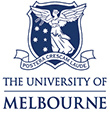Molecular analysis of influenza A(H3N2) in a remote tropical island during 2014-2019 to identify the frequency of introduction and local circulation
Authors:
- Azam, Sikandar
- Imamura, Takeaki
- Okamoto, Michiko
- Sayama, Yusuke
- Saito, Mayuko
- Saito-Obata, Mariko
- Dapat, Clyde
- Tamaki, Raita
- Joboco, Christina Dahlia
- Manalo, Joanna Ina
- Bado, Samantha Louise
- Cornejo, Joanne De Jesus
- Lupisan, Socorro
- Inobaya, Marianette
- Tallo, Veronica
- Quiambao, Beatriz P
- Oshitani, Hitoshi
Details:
International Journal of Infectious Diseases, Volume 154, 2025-05-31
Article Link: Click here
Background The sources of new antigenic Influenza A(H3N2) variants and the role of tropical regions in the global A(H3N2) circulation remain unclear. By conducting molecular analysis, this study aimed to identify A(H3N2) introduction events and the duration of local circulation in a geographically remote tropical island. Methods Nasopharyngeal/nasal samples were collected from symptomatic children under 5 years old in a remote tropical island of the Philippines between 2014 and 2019. From the 330 A(H3N2) strains detected, 150 were sequenced for the Hemagglutinin 1 (HA1) gene. Time-scaled Bayesian phylogenetic analysis identified introduction events from global A(H3N2) circulation. We estimated the duration of local circulation and its association with detected amino acid substitutions. Results Six different A(H3N2) clades/subclades circulated during the study period. Of the 15 introduction events identified during this period, 13 resulted in local circulation lasting less than 3 months, while one led to 5-month-long circulation. Another 10-month-long local circulation event, by definition, was more likely the result of two distinct introduction events with local circulation lasting less than 3 months, respectively. Most amino acid substitutions that emerged during local circulation were sporadic. No fixed substitutions appeared at the seven key amino acid sites for antigenic changes, suggesting that introduced strains were maintained without the emergence of new antigenic variants. Conclusion In our study population, A(H3N2) circulation resulted from multiple introduction events, followed by local circulation lasting less than 3 months, with occasional long-term persistence. Our study indicates that tropical regions may contribute to maintaining globally circulating strains but may not be a source of antigenic variants.


